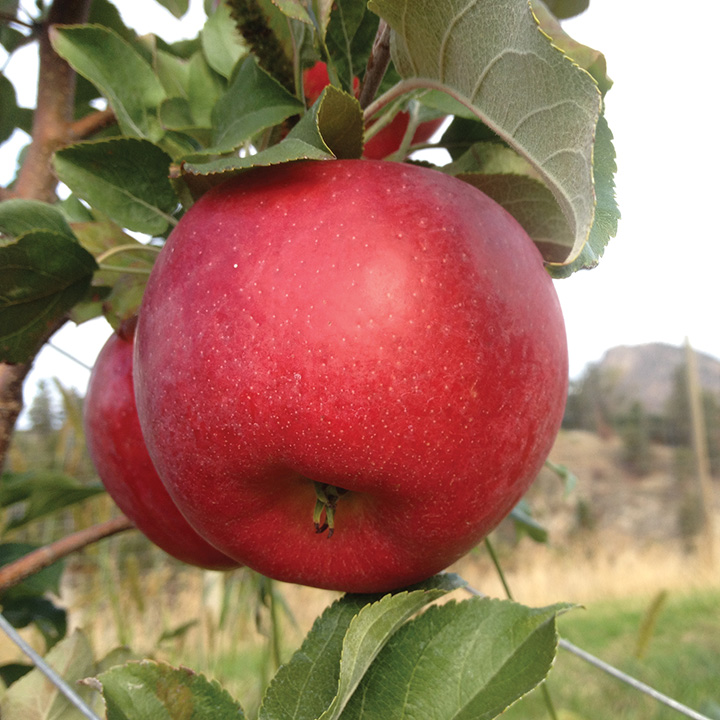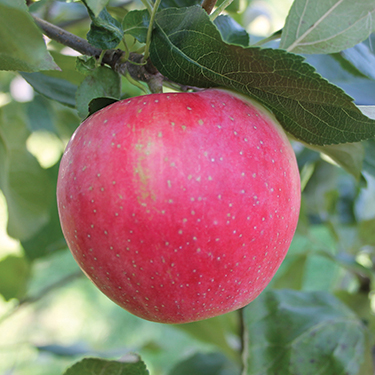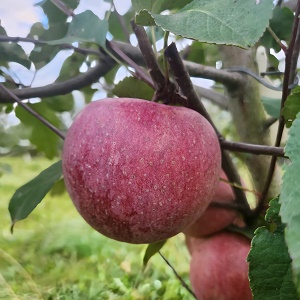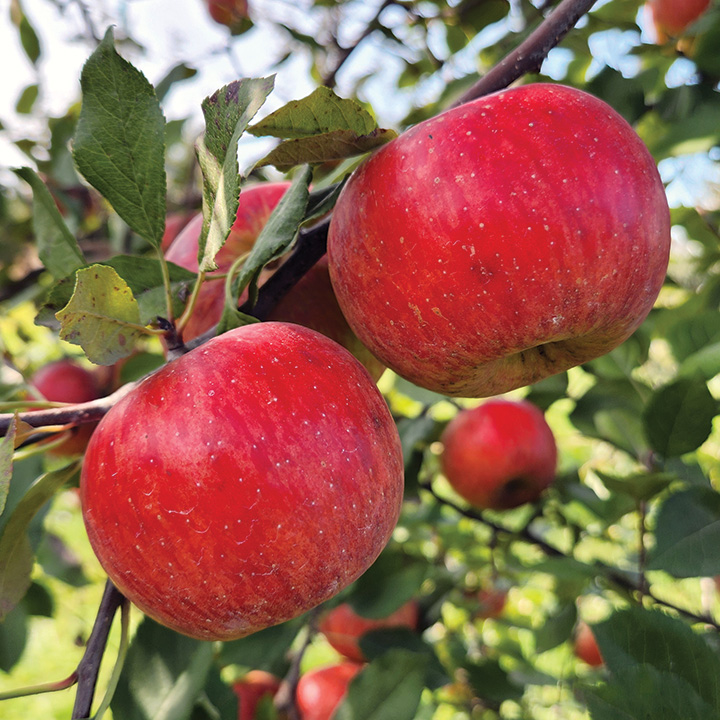Apple : ROYAL RED HONEYCRISP® (LJ-1000) Semi-Dwarf (G969) (Orchard Grade)
$37.95
An 'orchard grade' is a tree that may be somewhat shorter, slightly crooked, or a bit scratched, or for some other reason is not a perfect front lawn specimen. These trees will work just as well in an orchard as a first or number one would, since they still produce the very same fruit.
In the fruit world a ‘sport’ is a natural occurring mutation that differs in some small way from other identical grafts. In some cases a single branch, and in other instances an entire tree, will show up with a slight variation in fruit colour or ripening time. When this happens in a top commercial variety, it becomes a big deal, even though the actual difference is rather minimal. Such is the case with the Royal Reds. A Honeycrisp with slightly more uniform red colour turned up in Washington state. It was observed, replicated and studied, and finally patented. Since we are licensed to graft this one for our commercial customers, we have also made it available for homeowners. Same sizzle and snap with somewhat more colour. Some claims for improved storage life have also been made.
NEEDS A POLLENIZER | ZONE 3/4 | HARVEST: LATE SEPT.
Only logged in customers who have purchased this product may leave a review.
Growing Tips
Besides selecting the most disease resistant varieties, there are
a few simple things to do to have better apples.
- Fertilize under the outer edges of your trees. There are no feeder roots next to the trunk. A well fed tree stays healthier. (Adequate calcium in the soil also helps so that apples keep longer.)
- Pick up fallen fruit and compost, dispose of, or feed to livestock (where possible).
- Rake up leaves in the fall and compost them away from the orchard.
- Prune trees to encourage light and air to reach the inside of the tree.
- Provide bird nesting sites near your orchard. A variety of orchard companion type plants will attract native pollinator insects and also encourage birds to come and eat insect pests.





Reviews
There are no reviews yet.